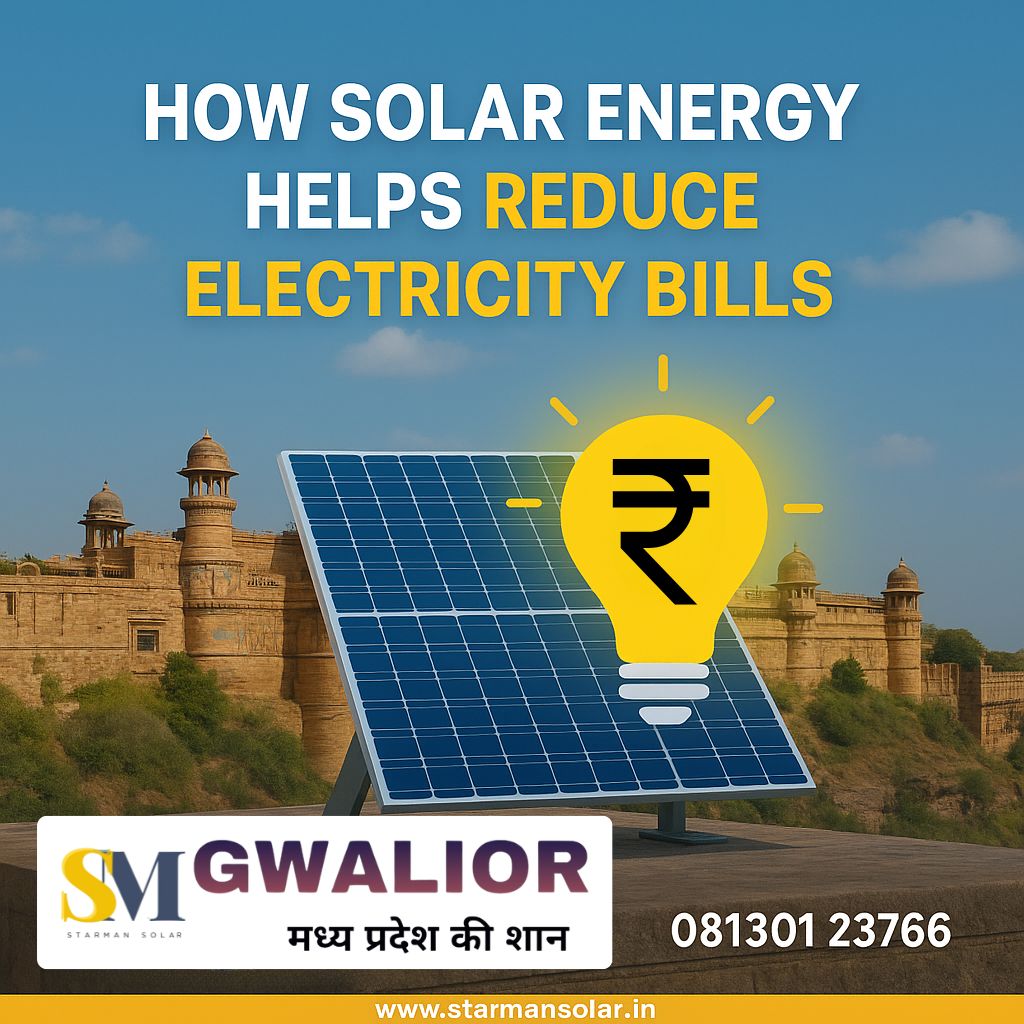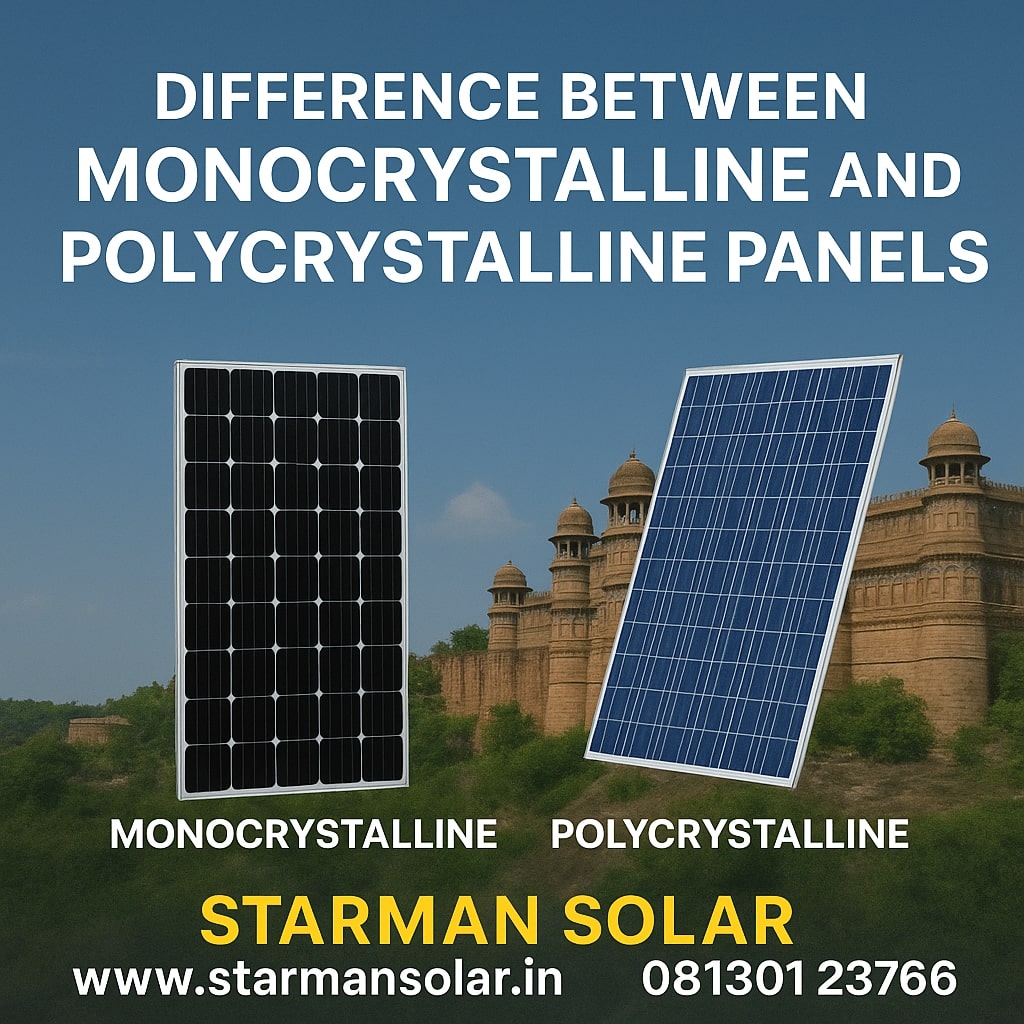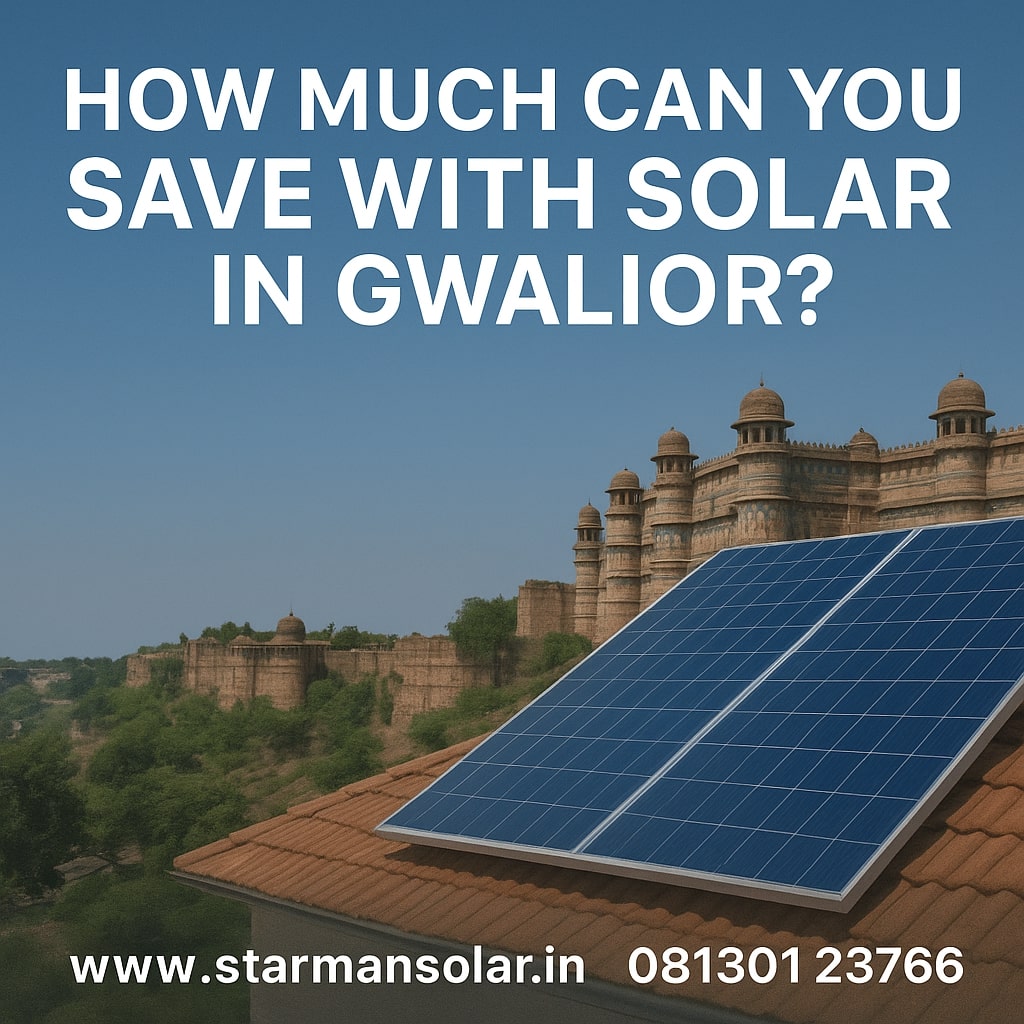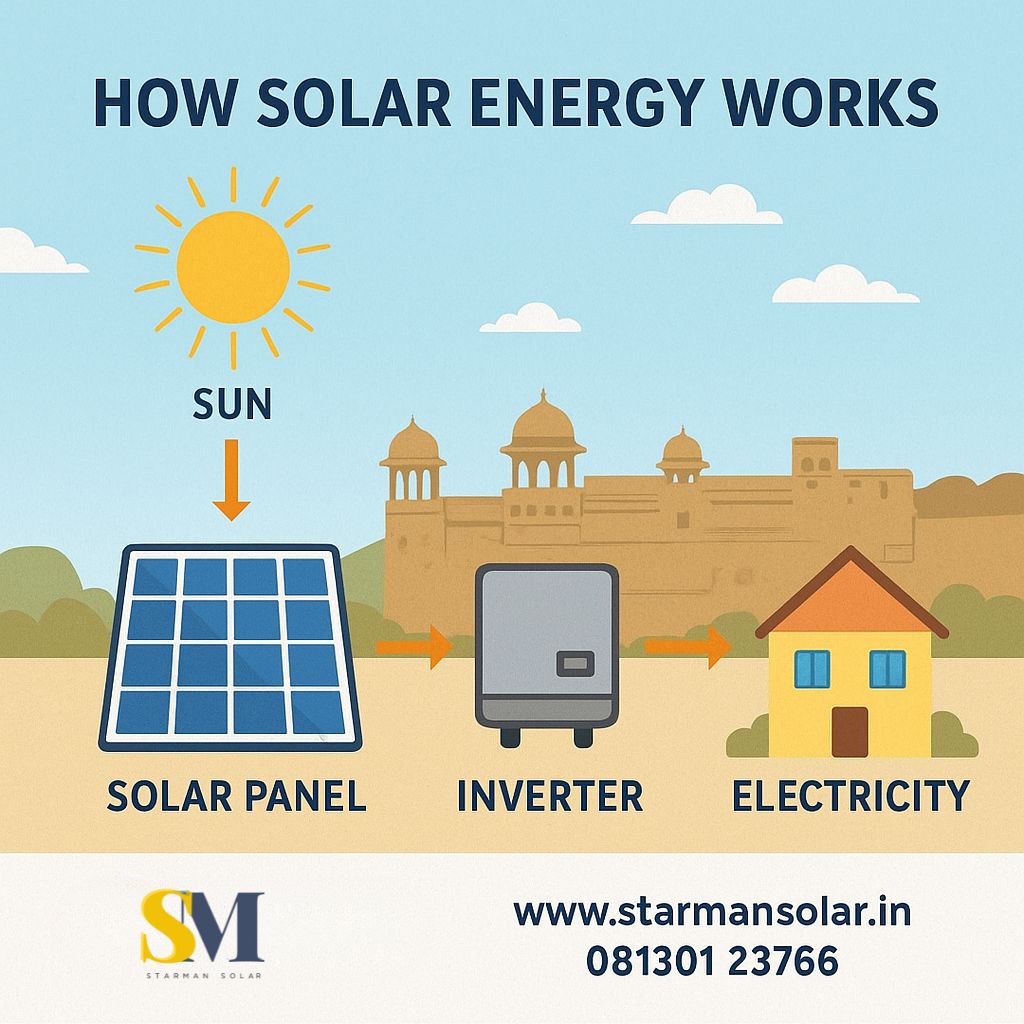Difference Between Monocrystalline and Polycrystalline Panels
- starman
- September 9, 2025
- 3:44 pm
- No Comments
When choosing the right solar panel for your home or business, understanding the difference between monocrystalline and polycrystalline panels is essential. Both types have their strengths and drawbacks. The decision largely depends on your budget, available space, and energy goals.
At Starman Solar, we help customers across India choose the best system tailored to their needs. In this article, we’ll break down the distinctions, advantages, disadvantages, and price points of mono vs poly solar panels.
What Are Monocrystalline Panels?
Monocrystalline solar panels, often known as mono panels, are made from a single continuous crystal structure. These panels are easily identified by their uniform dark black color and rounded cell edges.
Key Features:
- High efficiency (up to 22%)
- Better performance in low light and high temperatures
- Space-efficient design
- Long lifespan (25–30 years)
Monocrystalline Solar Panel Price:
Due to higher efficiency and advanced manufacturing, monocrystalline solar panel prices are typically 15–25% more than polycrystalline panels. However, they offer better long-term returns.
What Are Polycrystalline Panels?
Polycrystalline solar panels, or poly panels, are made from multiple fragments of silicon melted together. These panels have a bluish hue and a square-cut appearance.
Key Features:
- Moderate efficiency (15–17%)
- Slightly lower temperature tolerance
- Lower manufacturing cost
- Environmentally friendlier production process
Polycrystalline Solar Panel Price:
These panels are more affordable, making them popular for residential and rural installations. The cost savings make them a solid choice for budget-conscious buyers.
Mono vs Poly Solar Panel Price Comparison
Panel Type | Efficiency | Price (Per kW Approx.) | Ideal For |
Monocrystalline | 18–22% | ₹28,000 – ₹35,000 | Limited space, high ROI |
Polycrystalline | 15–17% | ₹22,000 – ₹28,000 | Budget-friendly, large rooftops |
Note: Prices vary depending on brand, inverter type, and installation complexity. Starman Solar works with leading panel suppliers to offer both options at the best rates.
Performance Comparison: Monocrystalline vs Polycrystalline
1. Efficiency
Mono panels win here, thanks to their single-crystal design that allows for smoother electron flow. They are ideal when rooftop space is limited.
2. Temperature Tolerance
Monocrystalline panels handle heat better and maintain output under high temperatures, making them suitable for hotter climates.
3. Aesthetics
Monocrystalline panels have a sleek black design, often preferred for modern homes. Polycrystalline panels have a bluish tone and can appear bulkier.
4. Installation Area
If you have a small rooftop and want maximum output, mono is better. But if space isn’t a concern, poly panels offer great value.
Disadvantages of Monocrystalline Solar Panels
While monocrystalline panels offer top-tier performance, they do come with some downsides:
- Higher upfront cost
- More silicon waste during production
- Reduced output if partially shaded, due to their series circuit design
- Fragility in some designs due to thinner silicon wafers
However, Starman Solar sources robust, high-quality panels that reduce these risks significantly.
Difference Between Monocrystalline and Polycrystalline Solar Cells in Hindi
Here’s a quick breakdown in Hindi:
Monocrystalline Solar Panel (मोनोक्रिस्टलाइन सोलर पैनल):
- उच्च दक्षता
- महंगे लेकिन बेहतर प्रदर्शन
- गहरे काले रंग के सेल
Polycrystalline Solar Panel (पॉलीक्रिस्टलाइन सोलर पैनल):
- मध्यम दक्षता
- सस्ते और बजट के अनुकूल
- नीले रंग के सेल
Which One Should You Choose?
Choose Monocrystalline If:
- You have limited roof space
- You want higher efficiency and faster ROI
- Aesthetics and temperature performance matter
Choose Polycrystalline If:
- You’re on a tighter budget
- You have enough rooftop area
- You’re setting up in a moderate climate
Still unsure? Starman Solar’s experts offer free consultations to help you make the right choice.
FAQs
1. Which is better, monocrystalline or polycrystalline?
Monocrystalline panels are better in terms of efficiency, space usage, and performance in harsh weather. However, polycrystalline panels are more budget-friendly and are sufficient for many homes. The best choice depends on your space, budget, and energy needs.
2. What are the disadvantages of monocrystalline panels?
Disadvantages include:
- Higher cost
- Less efficient under shading
- More complex manufacturing process
- More silicon waste compared to poly panels
3. Which type of solar panel is best?
There’s no one-size-fits-all answer. Monocrystalline panels are best for high efficiency and limited space, while polycrystalline panels are ideal for budget-conscious users with ample roof space.
4. Which lasts longer, monocrystalline or polycrystalline?
Both panel types last around 25 to 30 years with proper maintenance. However, monocrystalline panels typically come with longer performance warranties and sustain higher efficiency over time.
5. What is the lifespan of monocrystalline?
The average lifespan of monocrystalline panels is 25–30 years. Many brands offer a 25-year performance guarantee, ensuring they retain at least 80–90% efficiency by the end of that period.
Final Thoughts
Understanding the difference between monocrystalline and polycrystalline panels is vital when planning a solar installation. Both have their pros and cons, and the right choice depends on your priorities—be it cost, efficiency, space, or aesthetics.
At Starman Solar, we guide you from start to finish. Whether you choose mono or poly, we ensure top-quality products, professional installation, and long-term support. Switch to solar today and invest in a brighter, greener future.
Share:
starman
Related Posts

Founded in 2021, Starman Solar has emerged as a trusted name in renewable energy solutions in Gwalior.
Top Rated
Service 20255.0
CONtact WITH US
FOLLOW US
Starman Solar Pvt. Ltd. © 2025 All Rights Reserved | Designed By PR Digital Marketing



